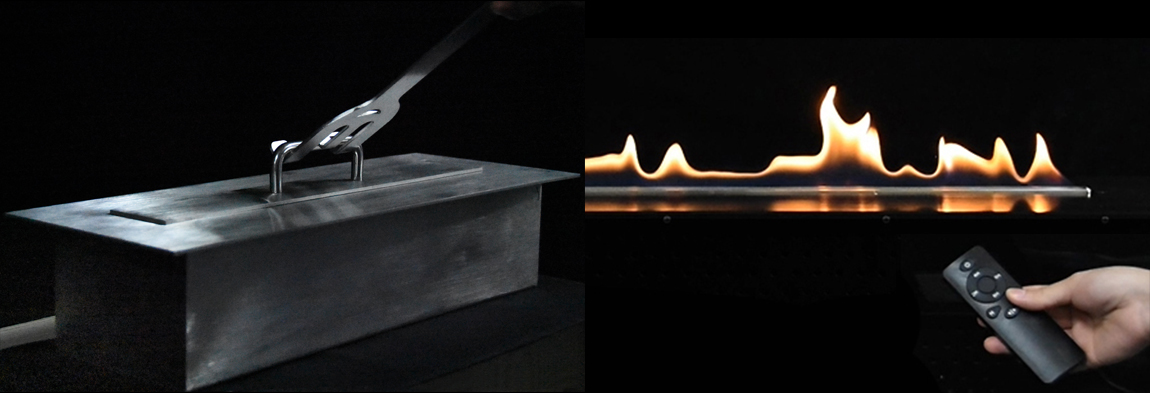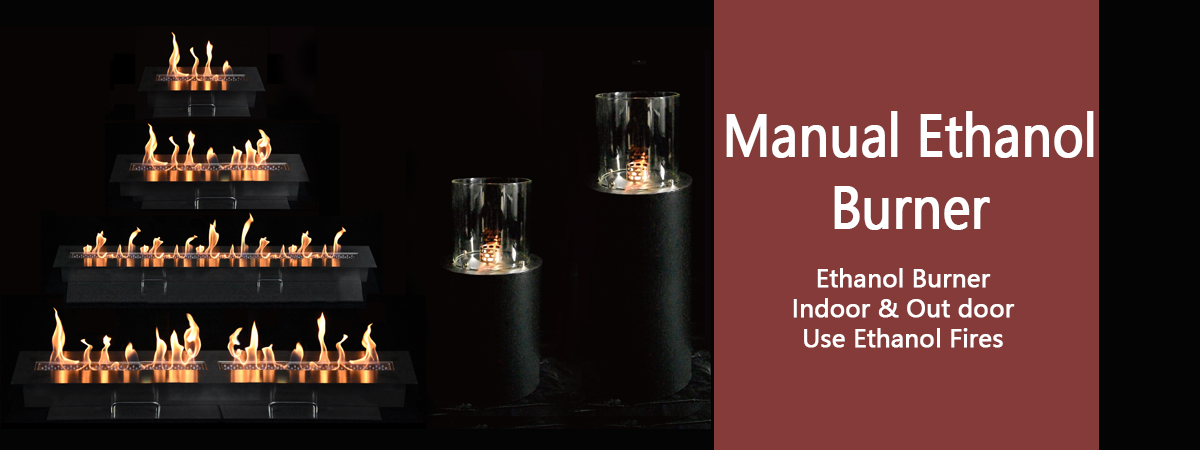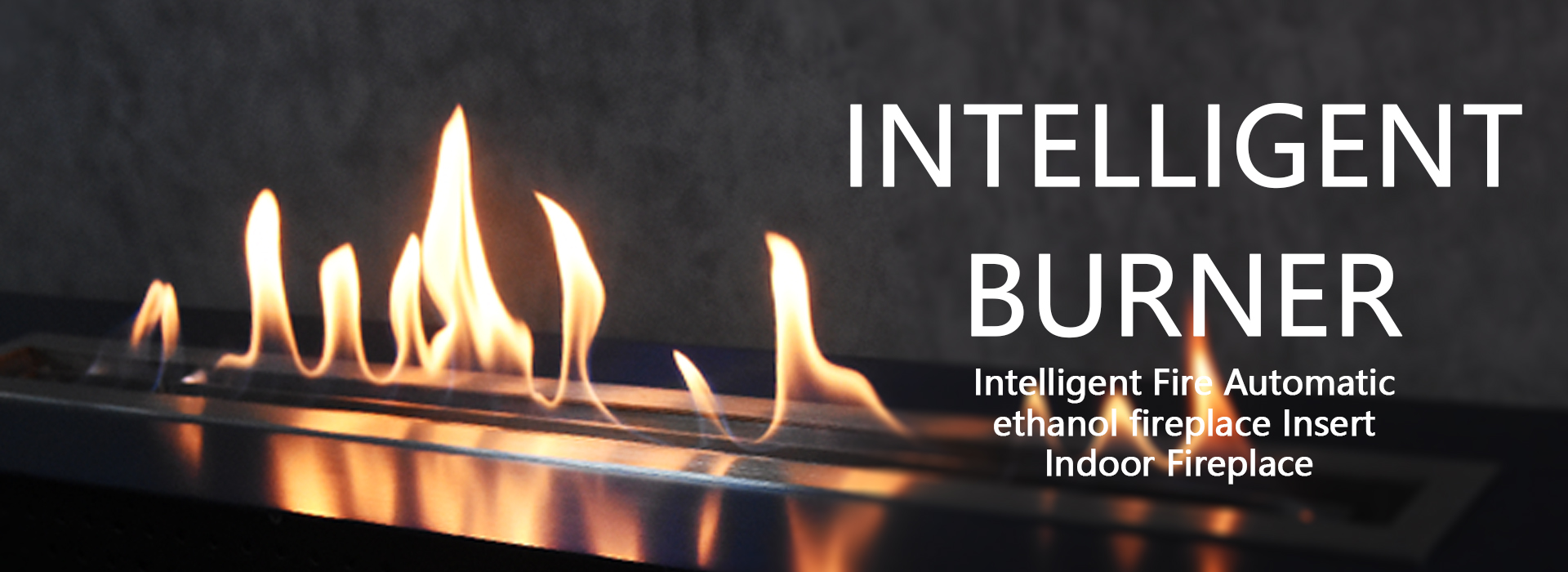Differences Between Manual Ethanol Fires And Automatic Ethanol Fires
Choosing the perfect bio ethanol fireplace from the wide array of models and burner types available can be quite daunting. Porén, understanding waht the differences are between a manual ethanol fireplace and an automatic ethanol fireplace can help you make an informed decision.
The key contrasts lie in their operation and control mechanisms. Unha lareira manual de bio etanol require unha intervención manual para o recheo de combustible, ignición, Control de chama, e extinguindo, co usuario controlando persoalmente o proceso. Por outra banda, Unha lareira automática de etanol incorpora controis electrónicos, como o recheo de combustible bombeado, ignición automática, intensidade de chama axustable e opcións de extinción electrónica, proporcionando comodidade e engadido funcións de seguridade. Let's delve deeper into their distinctions to help you make the right choice for your needs.

Automatic ethanol burners are a step up from manual ethanol burners. Automatic ethanol burners can be operated with a remote control, control panel or even your smartphone and smart home system. These remote-controlled bio ethanol burners are also safer thanks to many safety sensors overseeing their work.
A manual ethanol fireplace insert is a stainless-steel container that is filled with bio ethanol fuel. To start the fireplace, you need to use a long lighter to ignite the fuel. The point is that you have to adjust the flames manually and extinguishing the fire is done the same way.
Bio ethanol fireplaces first appeared in 2005. A introdución dos lumes de bioetanol permitiu colocar unha lareira case en todas partes e sen ventilación, combustión, fume, hollín ou mantemento caro. Dende entón, a tecnoloxía e a seguridade evolucionaron, e hoxe temos dous tipos de incendios de bioetanol: Manual and Automatic bio ethanol burners.
Estes dous tipos teñen cada un as súas vantaxes e desvantaxes. De aí, o tipo de queimador que seleccione, depende dos requisitos que teñas para a túa lareira, onde se utilizará, e cal é o seu orzamento.
Although there are only two types of bio ethanol burners, os produtos de diferentes fabricantes poden variar e ofrecer diferenzas no funcionamento dos seus queimadores. For this reason, the information you will find in this guide will only be indicative. If you want a more accurate description of each manufacturer's bio fireplace and burners, you should check out the specific product page and read the manual linked on the page.
You can find all of our automatic or manual bio ethanol burners here:
Bioethanol Fires with a Manual Bio ethanol Burner
A manual bio ethanol burner, is a steel container made of stainless steel, which you fill with bioethanol. The burner has an opening, that can be round or long, depending on the shape of the burner. The flame is ignited with a lighter and extinguished by smothering the fire. The manual burner is the most known, and therefore, it is seen in most bioethanol fires, especially in wall mounted and freestanding bioethanol fires.
To increase the safety of manual bioethanol burners, almost all manufacturers had to find a method for how to avoid spilling the bioethanol out of the burner if it should fall or tip over. The most common method is the use of ceramics fibre cotton in the burner. This is designed to absorb the bioethanol fuel, and makes it impossible to spill the bio ethanol fuel out of the burner if it would tip over by accident.
Benefits of a Manual Bioethanol Burner

1. Non se precisa alimentación nin cables e pódese montar en todas partes
Manual bio ethanol burners and fireplaces can be installed and placed freely, porque non precisan alimentación nin outra conexión por cable, nin precisa de cheminea, ventilación ou chimenea. O único factor a considerar é o tamaño que quere que teña o queimador.
Porén, ti, por suposto, aínda que ter en conta os riscos xerais de incendio e as distancias de seguridade. Podes ler sobre as distancias de seguridade na nosa guía sobre o tema.
2. Manual bio ethanol burners are cheap
Bio ethanol fires have existed for some years, with the manufacturers continuously optimizing the production costs. Ademais, os queimadores manuais non requiren ningunha tecnoloxía dixital, e isto significa que os prezos das biochemineas manuais son bastante baixos neste momento.
Disadvantages of a Manual Bio ethanol Fireplace
1. Operated manually
The most obvious disadvantage of the manual bioethanol fireplace is the manual control. It means that you have to get close to the flame for adjusting or switching the burner on and off. Therefore, a manual bioethanol fire should not be operated by children.
2. Fewer safeguards
Although the manual burners are perfectly safe when you follow the instructions and use common sense, the automatic bio ethanol fires have additional safety sensors that the manual ones do not. These sensors are not available when using a manual biofire.
Bioethanol Fireplace with an Automatic Bioethanol Burner
Automatic bioethanol burners require, just like the manual burners, bioethanol fuel to function. Porén, this is the only real similarity between them.
Bio ethanol fires with automatic burners are much more technical. Depending on the selected model and manufacturer, you can control them with a remote control, via a control panel, an app, a home-system or Wi-Fi.
For the automatic burners, the bioethanol is filled into an external fuel tank. From there, it is pumped up into the burner for incineration when it is turned on. With manual burners, you just pour the bioethanol fuel directly into the burner opening.
The automatic burner is often seen in built-in bio ethanol fires and used for new constructions, bigger renovation or interior design.
Benefits of an Automatic Ethanol Burner

1. Fácil de controlar a chama
É máis doado apagar e acender un queimador automático. Todo o que tes que facer, é facer clic no control remoto, o panel de control do queimador ou a través dunha aplicación. Algúns incendios automáticos de bioetanol tamén permiten axustar o tamaño da chama e controlar a cantidade de calor irradiado.
2. Sensores de seguridade
Un extra extra cun queimador automático, é o número de sensores de seguridade, que non son posibles meter nun queimador manual. Isto pode incluír sensores que controlan os niveis de CO2, axitando, sobrequecemento, etc. Así, a lareira apagarase automaticamente, no caso de que os sensores detecten algún perigo.
3. Economía de combustible
Os queimadores automáticos adoitan ter unha mellor economía de combustible de bioetanol, xa que o combustible só se bombea ao queimador, cando sexa necesario. Isto significa que non se desperdiciará combustible de bioetanol ao acender e apagar a lareira. Ademais, tampouco se evaporará por si só se se deixa bioetanol sen queimar na lareira.
Desvantaxes dun queimador automático
1. Caro
Unha das maiores desvantaxes dun queimador automático de bioetanol é o prezo. Un queimador de bioetanol automático custa moito máis que o seu equivalente manual. A razón diso é que a tecnoloxía utilizada nos modelos automáticos aínda é relativamente nova e máis avanzada. Isto significa, require máis desenvolvemento e horas de traballo para producir, e os materiais necesarios para a fabricación son máis caros.
2. Require enerxía
Para que funcionen todos os compoñentes electrónicos do queimador, é necesario ter unha conexión eléctrica próxima á instalación da lareira de etanol. Isto fai que a instalación sexa menos flexible.
Porén, algúns queimadores automáticos están equipados cunha batería e, polo tanto, requiren recarga.
Art Fireplace Team Focus on Ethanol Fireplaces for more than 14 years and we are obliged to offer high quality products for all customers.

Art Fireplace Technology Limited.
PROFESSIONAL INTELLIGENT FIREPLACE LEADER
Official Website: https://www.art-fire.com
Phone:0086 13928878187 Correo electrónico:[email protected]
Enderezo:FLAT/RM 705,7/F,FA YUEN COMM BLDG NO.75,FA YUEN STREET,MONG KOK,KLN,HK
Tempo de publicación: 2024-04-24
